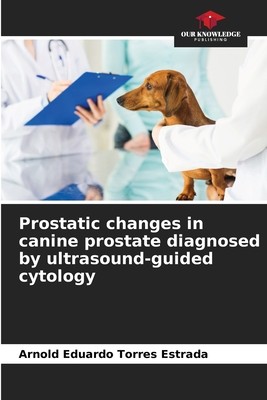
- We will send in 10–14 business days.
- Author: Arnold Eduardo Torres Estrada
- Publisher: Our Knowledge Publishing
- ISBN-10: 6207028430
- ISBN-13: 9786207028436
- Format: 15.2 x 22.9 x 0.6 cm, softcover
- Language: English
- SAVE -10% with code: EXTRA
Prostatic changes in canine prostate diagnosed by ultrasound-guided cytology (e-book) (used book) | bookbook.eu
Reviews
Description
Disorders of the prostate gland in adult canines include: Prostatic hyperplasia, prostatic cysts, inflammation and squamous neoplasia. These disorders are difficult to establish by physical examination and x-rays, therefore it is important to perform other tests to support the diagnosis such as ultrasound and fine needle aspiration prostate cytology (FNA), in order to prevent and treat these disorders in time. The aim of this study was to determine the frequency and type of prostatic alterations in canines diagnosed by ultrasonography and ultrasound-guided FNA in 25 uncastrated canines. Ultrasonographic examination was performed followed by ultrasonography-guided fine needle aspiration of the prostate. The effect of age group and clinical signs was evaluated in relation to the type of prostatic alteration. The slides were stained with Wright stain and cell recognition was performed. Statistical association of age and clinical signs with the presence of any prostatic pathology was found (p
EXTRA 10 % discount with code: EXTRA
The promotion ends in 16d.23:24:25
The discount code is valid when purchasing from 10 €. Discounts do not stack.
- Author: Arnold Eduardo Torres Estrada
- Publisher: Our Knowledge Publishing
- ISBN-10: 6207028430
- ISBN-13: 9786207028436
- Format: 15.2 x 22.9 x 0.6 cm, softcover
- Language: English English
Disorders of the prostate gland in adult canines include: Prostatic hyperplasia, prostatic cysts, inflammation and squamous neoplasia. These disorders are difficult to establish by physical examination and x-rays, therefore it is important to perform other tests to support the diagnosis such as ultrasound and fine needle aspiration prostate cytology (FNA), in order to prevent and treat these disorders in time. The aim of this study was to determine the frequency and type of prostatic alterations in canines diagnosed by ultrasonography and ultrasound-guided FNA in 25 uncastrated canines. Ultrasonographic examination was performed followed by ultrasonography-guided fine needle aspiration of the prostate. The effect of age group and clinical signs was evaluated in relation to the type of prostatic alteration. The slides were stained with Wright stain and cell recognition was performed. Statistical association of age and clinical signs with the presence of any prostatic pathology was found (p


Reviews